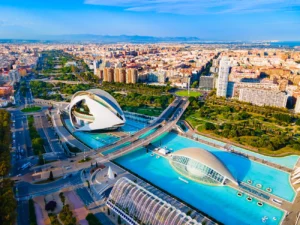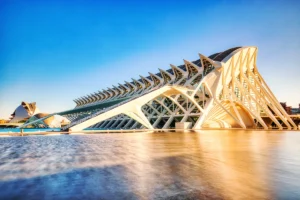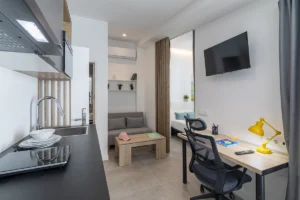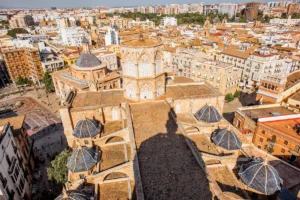Some of the best things in life are free and, in Valencia, there are a lot of things you can enjoy for free without spending a single euro.
Three buildings that you can visit for free in Valencia:
Palace of the Marquis de Dos Aguas

The Marquis de Dos Aguas Palace is located in the historic center of Valencia.
Declared a Historic Artistic Monument in 1941, it is a palace in a clearly Rococo style and closely related to the Baroque. Without a doubt, the highlight of its facade is the decoration of its main door, presided over by the image of the Virgin, from where representations of the two most important rivers of the Valencian Community descend: the Turia and the Júcar.
At present, the building houses the #Museo Nacional de Cerámica y de los Artes Suntuarias González Martí.
Bombas gens

Bombas Gens is an art center located in an old factory of the 30s of the last century completely rehabilitated.
The building is constructed following the characteristic geometrization ArtDeco style of that era. It retains a medieval cellar and an anti-aircraft shelter of the Civil War, both of which can be visited.
The ships of this unique jewel of the industrial heritage of Valencia house the private collection “Col le Percio a l’Art”, composed of photographs, paintings and sculptures of both national and international artists. It also has temporary exhibitions, cultural activities and an educational project in order to make art something that everyone can enjoy.
The Silk Exchange (La lonja de la seda)

The Lonja de la Seda building is considered the most emblematic Gothic style building in Valencia.
It was built in 1483 and consists of three distinct bodies articulated around the Patio de los Naranjos:
- The Hiring Room is a magnificent space where its eight slender columns of helical shaft stand out, opening like palm trees to form fifteen cross vaults that cover the entire interior space.
- The Tower has three floors, of which the lower one was dedicated to the chapel and the upper ones occasionally as a prison for bankrupt merchants.
- The Pavilion of the Consulate of the Sea, from the beginning of the 16th century, denotes in the lodge and in the medallions of its auction a marked Renaissance character.







